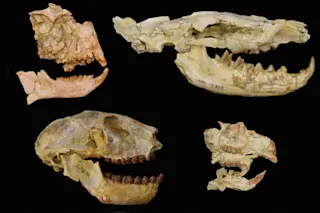(Inside Science) — Nearly two-thirds of mammal species in Africa and the Arabian Peninsula may have died off about 30 million years ago, a mass extinction that escaped detection for decades until now, a new study finds.
During a time span known as the Eocene-Oligocene transition between 40 million and 34 million years ago, Earth's climate shifted dramatically, with the planet growing cooler, ice sheets expanding and sea levels dropping worldwide. During the Eocene, Antarctica was covered by lush forests, but afterward it became the icy continent seen today.
Nearly two-thirds of the mammal species known in Europe and Asia at that time went extinct. Still, scientists previously thought African and Arabian mammals may have escaped this fate -- the area's mild climate and proximity to the equator could have served as a buffer from the worst of the cooling trend.
Now researchers find evidence that despite their relatively balmy ...














